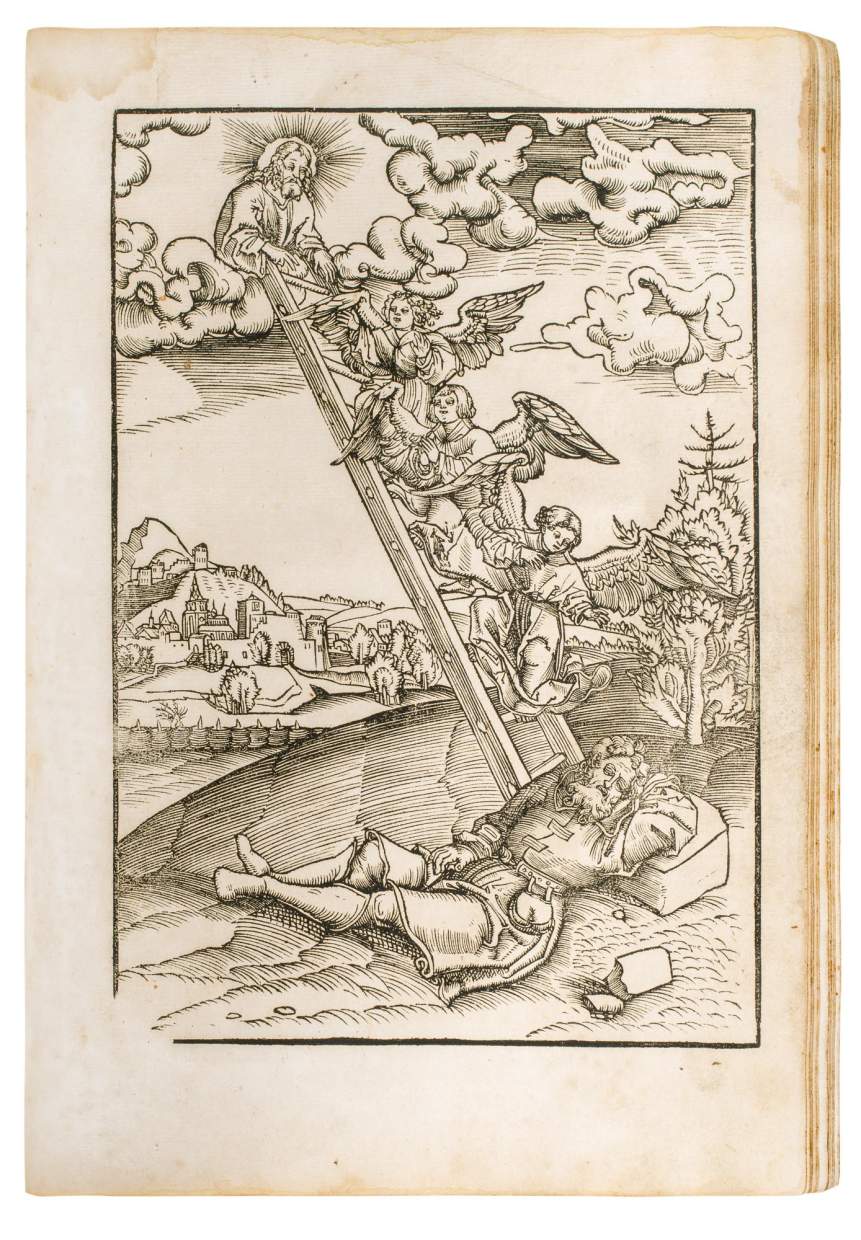

Old Testament – Martin Luther, Das Allte Testament deutsch. – Das Ander teyl des alten testaments. – Das Dritte teyl des allten Testaments.
Wittenberg: (I) [Melchior Lotter the younger, 1523]; (II-III) [Christian Döring and Lucas Cranach], 1524.
First editions of the first three parts of Luther’s translation.


Old Testament – Martin Luther, Das Allte Testament deutsch. – Das Ander teyl des alten testaments. – Das Dritte teyl des allten Testaments.
Wittenberg: (I) [Melchior Lotter the younger, 1523]; (II-III) [Christian Döring and Lucas Cranach], 1524.
First editions of the first three parts of Luther’s translation.


Old Testament – Martin Luther, Das Allte Testament deutsch. – Das Ander teyl des alten testaments. – Das Dritte teyl des allten Testaments.
Wittenberg: (I) [Melchior Lotter the younger, 1523]; (II-III) [Christian Döring and Lucas Cranach], 1524.
First editions of the first three parts of Luther’s translation.


Old Testament – Martin Luther, Das Allte Testament deutsch. – Das Ander teyl des alten testaments. – Das Dritte teyl des allten Testaments.
Wittenberg: (I) [Melchior Lotter the younger, 1523]; (II-III) [Christian Döring and Lucas Cranach], 1524.
First editions of the first three parts of Luther’s translation.


Old Testament – Martin Luther, Das Allte Testament deutsch. – Das Ander teyl des alten testaments. – Das Dritte teyl des allten Testaments.
Wittenberg: (I) [Melchior Lotter the younger, 1523]; (II-III) [Christian Döring and Lucas Cranach], 1524.
First editions of the first three parts of Luther’s translation.


Old Testament – Martin Luther, Das Allte Testament deutsch. – Das Ander teyl des alten testaments. – Das Dritte teyl des allten Testaments.
Wittenberg: (I) [Melchior Lotter the younger, 1523]; (II-III) [Christian Döring and Lucas Cranach], 1524.
First editions of the first three parts of Luther’s translation.

borders, 1 title illustration, 5 historiated initials, 35 illustrations, all in woodcut by Lucas Cranach the Elder and his workshop.
This work is now sold.
As soon as the New Testament was complete (September 1522; the famous September Testament), Luther began translating the Old Testament, which was published successively, in parts. However, the translation took many years, and Luther’s first, complete Bible did not appear until 1534.
The present, first three parts of Luther’s translation comprise the Pentateuch, the historical books (Joshua-Esther), and the poetical books (Job, Psalms, Proverbs, Ecclesiastes, and Song of Songs).
As with the New Testament edition of 1522, Lucas Cranach (1472-1553) and his workshop provided the illustration for these first parts of the Old Testament. The frontispiece surreptitiously reveals the didactic character of the work. An enormous arch frames the title and is inhabited by little angels and putti playing and offering fruit baskets and flower garlands. The lower part of the composition is dedicated to teaching: a group of children and angels, encircling the Cross, look up expectantly to the crucified Christ.
The Pentateuch includes eleven full-page woodcuts beginning with a depiction of the Great Flood. Noah’s Ark is hardly visible in the downpour inundating the world. Only the top of the square vessel is not overwhelmed while rain relentlessly pours down from the sky. People and beasts alike lie dead and torn on the shore in this distinctly unusual, sophisticated interpretation of the subject.
The seven woodcuts that show the Tabernacle, its equipment, and the regalia of the High Priest are particularly interesting and of educational value. These were obviously intended to acquaint the parish and the community with Jewish rites.
The second part includes twenty-three illustrations in total – with woodcuts of Samson, David, Solomon, etc. The title border of the third part shows the forefathers and the prophets in heaven watching Christ as he is nailed to the Cross. This composition points in nuce to Luther’s understanding of the Old Testament: as a forecast and preparation for the advent of the saviour. Only one more illustration is found in the third volume: Job on the Dung Heap.
These first parts of the Old Testament are extremely rare. Currently, no other copy comprising all three parts together can be found in commerce.
Looking for more printed Bibles? Click here.



